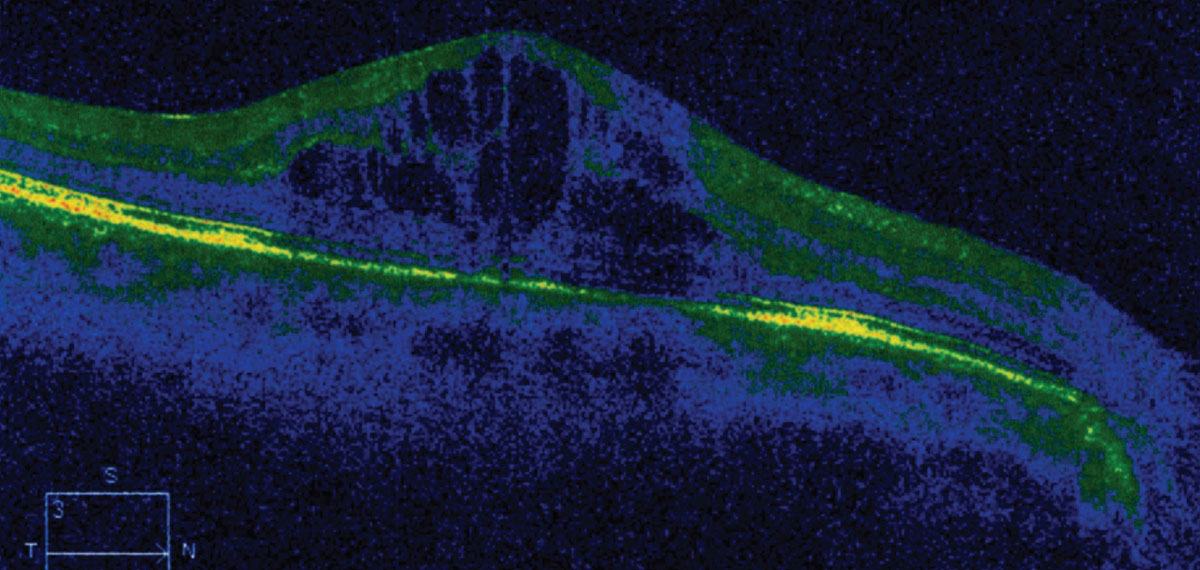 |
|
Treating cataract surgery patients postoperatively with NSAIDs and steroids instead of steroids alone was found to increase unplanned visits during the first six months post-op. Photo: Joseph W. Sowka, OD. Click image to enlarge. |
The most commonly performed procedure in the world, cataract surgery, is also one of the safest and most successful. Still, patients must be monitored postoperatively for the possibility of complications, including elevated intraocular pressure, increased and/or prolonged iritis, corneal edema and cystoid macular edema (CME).
To investigate whether post-treatment anti-inflammatory protocols might affect the incidence of adverse events, a recent study evaluated the number of unplanned visits during follow-up in patients treated postoperatively with a non-steroidal anti-inflammatory drug (NSAID) in combination with steroids vs. in those treated with steroids alone. The researchers concluded that combining an NSAID with steroids didn’t reduce the incidence of CME or unplanned visits within six months after surgery compared with steroid monotherapy.
The team reviewed the medical records of 1,000 patients who had received cataract surgery at two eye clinics (mean age at surgery: 75). One clinic treated patients postoperatively with combined treatment of NSAID and steroids while the other prescribed steroids alone.
Fewer patients receiving combined treatment—84 cases (16.8%)—returned for at least one extra visit in the six months post-op compared with 63 cases (12.6%) in the group treated with steroids only. The study authors noted that the reasons for additional visits, including CME, weren’t significantly different between the two clinics (Table 1).
“Overall, the most common reason for exclusion in both groups was that the contralateral eye already had entered the study, followed by postoperative treatment not given according to the standard routine at the respective clinic,” the authors wrote in their paper. They added that while treatment not according to protocol (most commonly due to NSAID allergy) was a common reason why patients returned for an unplanned visit at the first clinic, at the second clinic, “Records of postoperative treatment in EMR were missing more often.”
The total CME incidence risk during the six-month follow-up was 1.4%. The study authors reported that “14 patients returned for an unplanned visit due to clinically significant CME, regardless of protocol for anti-inflammatory treatment.”
Patients with diabetes or epiretinal membrane were found to be at an increased risk for CME (risk ratios: 3.83 and 10.76, respectively). The CME incidence rate in patients with either comorbidity was 2.9%, while the incidence rate of those with no diabetes or epiretinal membrane was significantly lower at 0.8% (six cases).
The researchers concluded that while NSAID therapy may not affect CME risk, it was found to increase the number of unplanned patient visits postoperatively. They wrote that their study “found no benefit of adding NSAID treatment to steroids for postoperative anti-inflammatory treatment for preventing inflammation-related symptoms causing patients to seek unplanned medical attention after cataract surgery.”
Table 1. Reasoning Behind Unplanned Visits Post-Cataract Surgery
NSAID and Steroid (n=84) | Steroid Only (n=63) | |
CME | 8 | 6 |
Elevated IOP | 14 | 5 |
Elevated/prolonged iridocyclitis | 8 | 13 |
Corneal edema | 13 | 11 |
Miscellaneous | 52 | 39 |
Gärdin J, Johansson B. Incidence of unplanned visits after cataract surgery in two large cohorts with different anti-inflammatory treatment protocols. Acta Ophthalmol. October 5, 2022. [Epub ahead of print]. |

